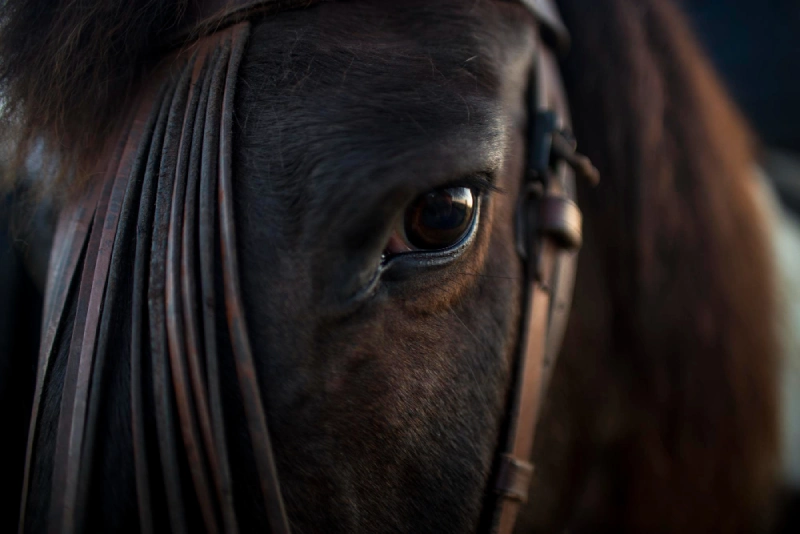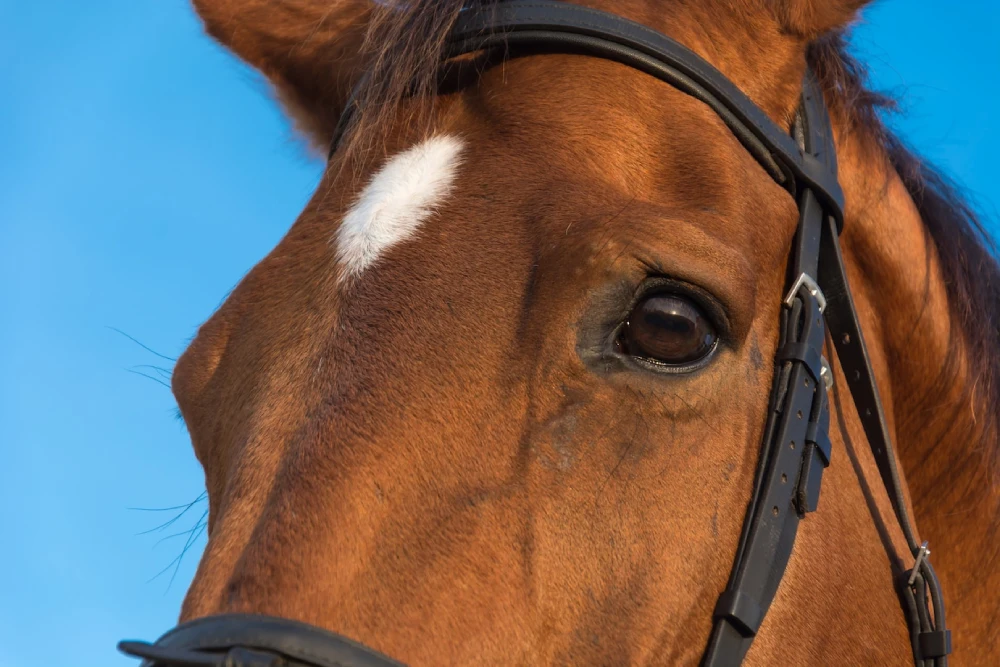Horses are magnificent creatures renowned for their beauty and strength. They are also renowned for having lovely, big eyes that are frequently referred to as having windows into the soul. Horses’ eyes have undoubtedly been a source of fascination for people throughout history and are among their most distinctive features. We shall examine the dimensions of horse eyes and what makes them so distinctive in this essay.
Size of a Horse’s Eye
Horses’ eyes are relatively large in relation to their head size. They have a broad range of vision because they are situated on the sides of the horse’s head. Depending on the breed, a horse’s eye can range in size from two to three inches in diameter. The average horse weighs about 900-1,200 pounds, so although this may not seem like much, their eyes are actually rather enormous.
Horses’ eyes are additionally distinctive in that they are situated on the sides of the head, giving them a wide-angle view of their environment. Horses are prey animals, and as such, their eyes are built to spot predators from a distance. Horses have eyes on the sides of their heads, giving them a nearly 360 degree range of vision. With the exception of what is directly behind them, they can see practically everything around them.
The form of a horse’s eye
Horse eyes are not only big, but they are also shaped differently. They have a very unique appearance because they are spherical and appear somewhat bulging. More light may penetrate the eye because of the curvature of a horse’s cornea, which has a bigger surface area. As a result, horses have superb night vision, which is a crucial adaptation for a creature that is frequently active in low light.
The breed of a horse can also affect the color of its eyes. Although the majority of horses have brown or black eyes, several breeds also have blue or green eyes. Heterochromia, or having two different-colored eyes, can occur occasionally in horses. This is an uncommon ailment that affects some breeds, such the American Paint Horse, more frequently than others.

Why Horse Eyes Are Used
Horses have eyes built for wilderness survival. They possess a variety of distinctive traits that enable them to immediately recognize danger. Horse eyes’ capacity to perceive motion is one of their most crucial abilities. As mentioned horses are prey animals, hence they require quick predator detection abilities. Because their eyes can pick up even the smallest movement, they can respond fast and stay out of harm’s way.
The ability of horse eyes to see in low light is another crucial characteristic. Due to the fact that horses are frequently active at night, their eyes have developed to enable night vision. This is due to the retina’s abundance of rod cells, which are in charge of detecting light under dim lighting situations.
Horse eyes also have a distinctive anatomy that enables them to focus on far-off things. In the front of the eye, a horse’s lens can change shape to enable the animal to focus on objects that are closer or farther away. Horses must be able to perceive both close and distant objects when they are moving, therefore this is crucial.
Other Interesting Facts
The nictitating membrane, sometimes known as the third eyelid, is present in horses. To shield the eye from dirt and other foreign objects, this transparent membrane travels over the eye. The third eyelid can serve as a windshield wiper to remove any debris that may have gotten past the other two eyelids in addition to keeping the eye moist.
Depending on how much light is reflecting off a horse’s eye, it might change color. For instance, a brown eye may appear virtually black in low light, yet it may appear lighter brown or even golden in strong sunlight.
Compared to humans, horses have a larger visual field, but a smaller binocular field. This indicates that although they have a worse depth perception than humans, they are better able to notice objects that are off to the sides.
Horse eyes can see patterns and colors that are unseen to humans because they are sensitive to UV light. Horses may use this to recognize one another and communicate nonverbally.
Sometimes a horse’s breed or ancestry can be determined by the size and form of its eyes. For instance, horses of breeds like the Arabian tend to have larger, more rounder eyes, whereas horses of breeds like the Thoroughbred tend to have smaller, more almond-shaped eyes.
Horses can close their eyelids tightly when necessary since they have very powerful eye muscles. This is crucial for shielding the eye from harm or irritability.
Horse eyes have vertical, enlarged pupils that let them better regulate the amount of light that enters the eye. For horses that are active in direct sunlight or low light environments, this is especially crucial.
Horses can notice objects off to the side without moving their heads because they have good peripheral vision. Whether grazing or traveling, this is helpful for recognizing predators or other potential hazards.
Horses can develop a number of eye problems, including cataracts, glaucoma, and uveitis, just like people. It is crucial for horse owners to keep an eye on their horses’ eyes and seek veterinary care if any problems develop because these disorders can lead to discomfort or even blindness.
Horse eyes are a fantastic illustration of evolution in action overall. They are intricate, stunning, and well suited to these extraordinary animals’ requirements. Horse eyes are incredibly fascinating, regardless of whether you love horses or are just a fan of nature’s beauty.


